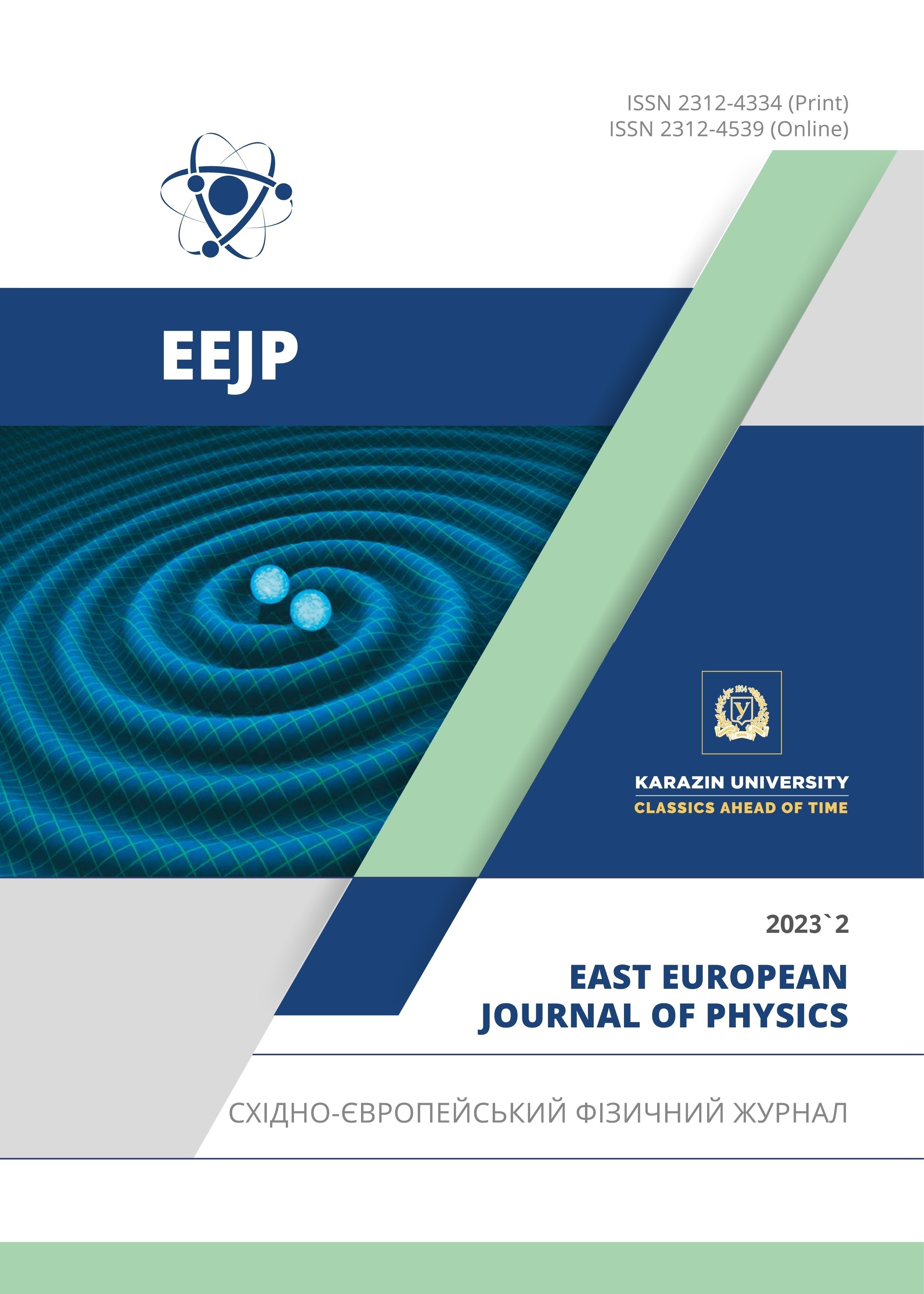The Thermoluminescence Parameters of Irradiated K-Feldspar
Abstract
Isothermal decay of the TL glow curve has been studied at ambient temperature. Heating of feldspar at 600ºC leads to increased sensitivity of the samples upon irradiation for the whole range of glow curve. In general, we observe a sensitivity increase of about five times. Fading of the glow curve is observed at the low-temperature part of the glow curve while it has been kept in the dark at the ambient, constant temperature. After a certain period, approximately in 40 to 50 days, the low-temperature region of the glow curve fades down while the high-temperature part remains unchanged. Peaks at the low-temperature region of the TL glow curve were isolated by the curve subtraction method. Activation energy and frequency factor parameters of the isolated peaks were calculated, taking first and second-order kinetics into account. The values of the calculated activation energy vary between 0.7 to 1.1 eV, and frequency factor values of the isolated peaks change within the order of 109 to 1013s-1. The µ values clearly indicate that all isolated peaks are more likely to be second-order kinetics.
Downloads
References
W.E. Madcour, and S.Y. Afifi, “Thermoluminescence Properties of Local Feldspar from Gattar Mountain Area”, Arab J. Nucl. Sci. Appl. 50(1), 59-66 (2017).
L.A. Gliganic, R.G. Roberts, and Z. Jacobs, “Natural variations in the properties of TL and IRSL emissions from metamorphic and volcanic K-feldspars from East Africa: Assessing their reliability for dating”, Radiat. Meas. 47(9), 659–664 (2012). https://doi.org/10.1016/j.radmeas.2012.03.001
S. Tsukamoto et al., “A comparative study of the luminescence characteristics of polymineral fine grains and coarse-grained K and Na-rich feldspars”, Radiat. Meas. 47(9), 903–908 (2012). https://doi.org/10.1016/j.radmeas.2012.02.017
L. Panzeri, M. Martini, and E. Sibilia, “Effects of thermal treatments on luminescence features of three natural feldspars”, Radiat. Meas. 47(9), 877–882 (2012). https://doi.org/10.1016/j.radmeas.2012.03.021
E. Şahiner, M.K. Erturaç, G.S. Polymeris, and N. Meriç, “Methodological studies on integration time interval’s selection for the luminescence ages using quartz and feldspar minerals; sediments collected from Sakarya, Turkey”, Radiat. Meas. 120, 163–169, (2018). https://doi.org/10.1016/j.radmeas.2018.06.024
N.M.M. Doğan, and E. Şahiner, “An Experimental Study Related to Dose Scattering on the Routinely Used Minerals with Comparison of Grain Sizes and Disks Materials”, Çankaya Univ. J. Sci. Eng. 13(2), 054–063 (2016). https://dergipark.org.tr/en/download/article-file/351167
V. Pagonis, P. Morthekai, and G. Kitis, “Kinetic analysis of thermoluminescence glow curves in feldspar: evidence for a continuous distribution of energies”, Geochronometria, 41(2), 168–177 (2014). https://doi.org/10.2478/s13386-013-0148-z
G.S. Polymeris, V. Pagonis, and G. Kitis, “Thermoluminescence glow curves in preheated feldspar samples: An interpretation based on random defect distributions”, Radiat. Meas. 97, 20–27 (2017). https://doi.org/10.1016/j.radmeas.2016.12.012
V. Pagonis, F.M. dos Santos Vieira, A. Chambers, and L. Anthony, “Thermoluminescence glow curves in preheated feldspar: A Monte Carlo study”, Nucl. Instruments Methods Phys. Res. Sect. B Beam Interact. with Mater. Atoms, 436, 249–256 (2018). https://doi.org/10.1016/j.nimb.2018.09.036
R. Chen, “On the calculation of activation energies and frequency factors from glow curves”, J. Appl. Phys. 40(2), 570–585 (1969). https://doi.org/10.1063/1.1657437
R. Chen, “Glow curves with general order kinetics”, J. Electrochem Soc. Solid State Sci. 1254–1257 (1969). https://iopscience.iop.org/article/10.1149/1.2412291
K. Strickertsson, “The thermoluminescence of potassium feldspars-Glow curve characteristics and initial rise measurements”, Nucl. Tracks Radiat. Meas. 10(4-6), 613–617 (1985). https://doi.org/10.1016/0735-245X(85)90066-3
I.K. Sfampa, G.S. Polymeris, N.C. Tsirliganis, V. Pagonis, and G. Kitis, “Prompt isothermal decay of thermoluminescence in an apatite exhibiting strong anomalous fading”, Nucl. Instruments Methods Phys. Res. Sect. B, Beam Interact. with Mater. Atoms, 320, 57–63 (2014). https://doi.org/10.1016/j.nimb.2013.12.003
Copyright (c) 2023 Sahib Mammadov, Aybeniz Ahadova, Aqshin Abishov, Ahmad Ahadov

This work is licensed under a Creative Commons Attribution 4.0 International License.
Authors who publish with this journal agree to the following terms:
- Authors retain copyright and grant the journal right of first publication with the work simultaneously licensed under a Creative Commons Attribution License that allows others to share the work with an acknowledgment of the work's authorship and initial publication in this journal.
- Authors are able to enter into separate, additional contractual arrangements for the non-exclusive distribution of the journal's published version of the work (e.g., post it to an institutional repository or publish it in a book), with an acknowledgment of its initial publication in this journal.
- Authors are permitted and encouraged to post their work online (e.g., in institutional repositories or on their website) prior to and during the submission process, as it can lead to productive exchanges, as well as earlier and greater citation of published work (See The Effect of Open Access).








